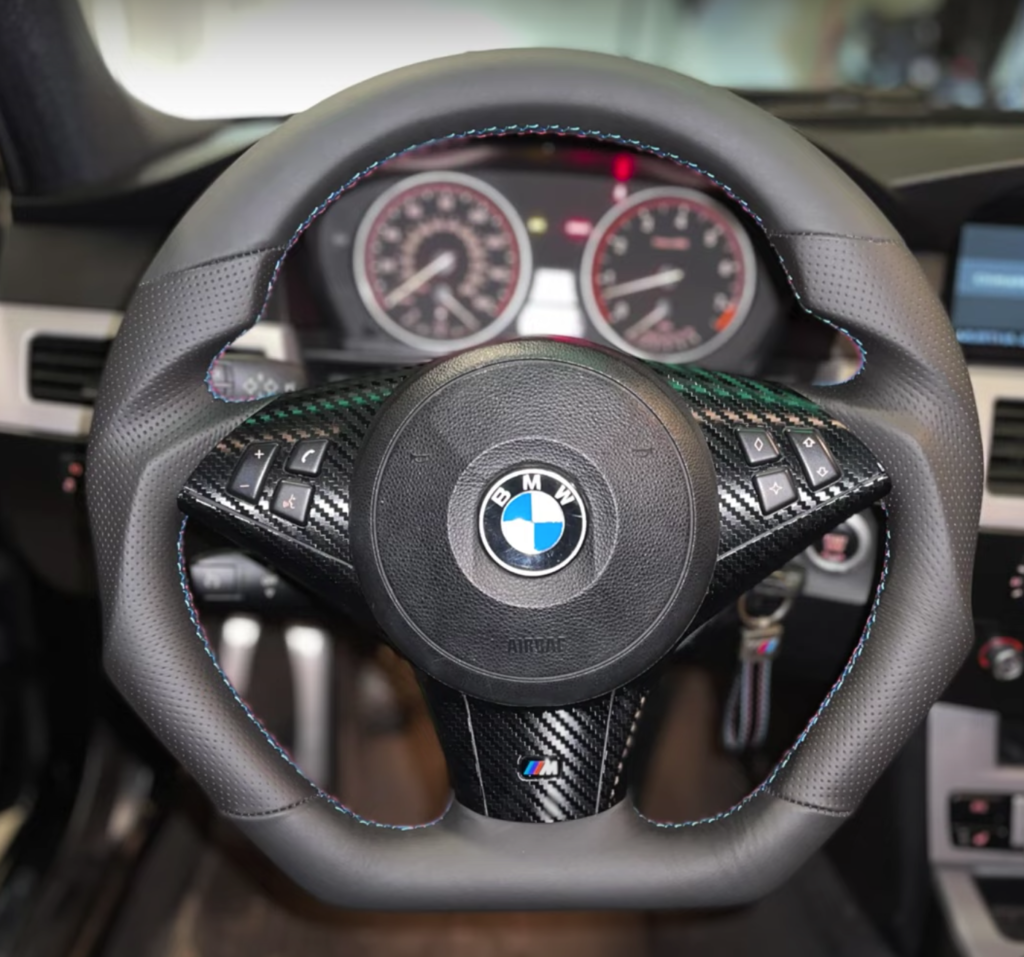
Flat-bottomed racing steering wheels allow drivers to have better control over their cars. They also provide additional stability for racers when making sharp turns or going around tight curves.
In addition, the design provides more room for the driver’s knees, which is important in a tight, cramped racing cockpit. For safety reasons, the flat bottom steering wheel makes it easier for the driver to get in and out of the car when there is an emergency happen.
In this blog post, we will be exploring the benefits of using flat-bottom racing steering wheels and how they help drivers to take their track performance to the next level!
Benefits of A Flat Steering Wheel
Over the years, flat-bottom racing steering wheels have become increasingly popular among professional racers due to their unique design and functionality.
Here you can find some of the benefits these flat steering wheels provide:
- allow the driver to go in and out of the cockpit with ease
- provide more legroom for the driver to maneuver the accelerator, brake, and clutch pedals
- help with rev-matching, heel-toe downshifting, and trail braking for professional racers in high-level racing competitions
- know whether the wheels are straight instantly when the flat position is facing the driver
- project a trendy, cool, and sporty look
- ease the mechanics in their wheels alignment process
- in case of emergency, allow the drivers to escape with ease and fast movement from their seats
- allow the airbag to expand in a more rectangular shape, which provides more protection for the driver
- reduce the vibrations on the steering wheel and allow the driver to stay in control of the wheel for longer periods
- it allows the steering wheel to be mounted lower against the driver’s legs
What materials are Commonly Used To Make Flat Bottom Steering Wheels
Flat-bottomed racing steering wheels can be made from a variety of materials, depending on the manufacturer’s design and the intended use of the steering wheel. Some common materials used to make flat-bottomed racing steering wheels include:
- Aluminum: Many racing steering wheels are made from lightweight aluminum, which is durable and provides a high level of strength and stiffness. Aluminum can also be anodized or powder-coated to provide a range of colors and finishes.
- Carbon fiber: Carbon fiber is a high-performance material that is lightweight and provides excellent strength and stiffness. It is often used in racing steering wheels for its high-end look and performance.
- Leather: Leather is a popular material for the grip area of racing steering wheels, as it provides a comfortable and secure grip. Leather can also be dyed or embossed to provide a range of colors and textures.
- Suede: Suede is another material commonly used for the grip area of racing steering wheels. It is a soft and grippy material that provides a comfortable and secure grip, even in wet or humid conditions.
- Wood: Some racing steering wheels are made from wood, which can provide a classic and stylish look. Wood can be finished in a range of colors and textures and is often used in vintage or classic race cars.
What Are The Popular Brands Of Flat-bottom Racing Wheels On The Market
Here are five of the popular brands you can consider:
- Momo: The full name for Momo is Moretti Monza. It was founded in 1964 by race car driver Gianpiero Moretti in Italy when the steering wheel he commissioned gained fame within the racing community. Even then Ferrari Formula One driver, John Surtees also love the steering wheel and used it to win his Formula One world title in the same year.
- Sparco: Sparco Wheels are designed by OZ Design Lab in Italy. It is a Tier One supplier of the steering wheel for Alfa Romeo, AMG, Aston Martin, Audi, Bentley, Bugatti, Ferrari, Lamborghini, and Lotus to name a few. The company was founded in 1977 in Italy.
- OMP: The OMP (Officine Meccaniche Percivale) steering wheel is made in Italy since 1973. Its Airtex material, sturdy base, and contoured shape help set the bar higher among all the racing steering wheel manufacturers.
- Nardi Personal: The Nardi brand was founded in 1946 by Enrico Nardi and Renato Danese and later bought by Personal in 1990. Its steering wheels have been chosen as the supplier of the most important car manufacturers such as Ferrari, Lancia, Audi, Maserati, Lamborghini, Rolls Royce, Jaguar, Lotus, TVR, McLaren, Volkswagen, Abarth, and BMW.
- Simoni Racing: The company was founded in 1987 by its president Filippo Simoni in Italy. The recognition of its brand is also due to the consolidated presence in “Fast & Furious” movies.
What Are The Disadvantages Of A Flat Bottom Steering Wheel
Everything in life comes with a limit and it goes the same for our racing steering wheel. Here are various shortfalls we have identified:
- uncomfortable when doing tight turns, especially making a 3-point or a U-turn
- not easy to spin when you are making a full turn
- more expensive because the wheel manufacturer needs to create a separate mold
- look odd to some people as they still prefer the traditional round steering wheel
When Did Flat Bottom Steering Wheels Start Popular
The exact date of invention for the flat-bottom racing steering wheel is not clear, but it is believed to have been introduced in the late 1980s or early 1990s.
The flat bottom design was primarily created to provide more legroom for the driver, as well as to improve the handling and control of the vehicle during high-speed driving.
The design has since become a popular choice for racing cars in the early 2000s, particularly in Formula One racing. It was first used by Ferrari in 2001 and quickly caught on among other teams.
Since then, the flat bottom design has become a standard feature in many high-performance race cars and is also used in some high-end sports cars for the same reasons.
Final Thoughts
In conclusion, the flat-bottom racing steering wheel was introduced primarily to address the issue of limited legroom for the driver in high-performance race cars.
The design provided more space for the driver’s legs and allowed for a lower seating position, improving the overall ergonomics of the cockpit.
Additionally, the flat bottom design allowed for easier access to the car’s controls, especially during high-speed driving, and improved the handling and control of the vehicle during cornering.
Its popularity quickly grew among racing teams and has since become a standard feature in many high-performance race cars and high-end sports cars.
Overall, the flat-bottom racing steering wheel is a testament to the importance of ergonomics and design in motorsports, where even small improvements can make a significant difference in performance and driver comfort.
Have you got a racing wheel? If not, check out another article below:
FAQ
(1) Should you hold the steering wheel at the bottom?
The best hand position is to hold the wheel at 9 o’clock and 3 o’clock. This allows you to control and manage the car in the most efficient way.
However, in the event an airbag inflates, your hands may get injured.
Therefore, you may want to hold the wheel at 8 o’clock and 4 o’clock. Based on research, your hands also have lesser muscle fatigue and you feel more comfortable.
(2) How high should the steering wheel be for racing?
It is recommended that the top of the steering wheel be aligned with your shoulder height.
Your eye line should not be blocked by the wheel and be above it.
The wheel should be between 23 and 27 inches from your car floor to the center of the steering wheel.


